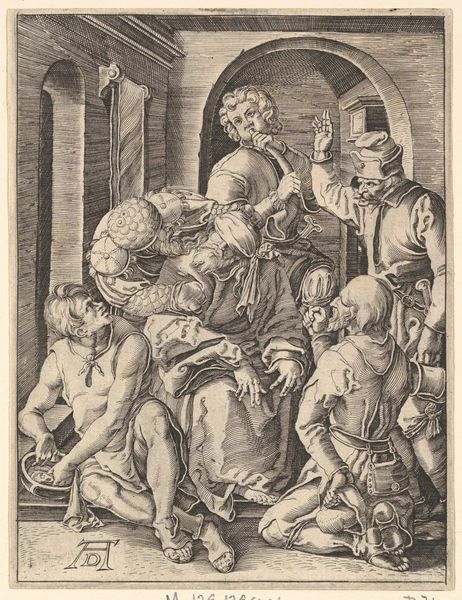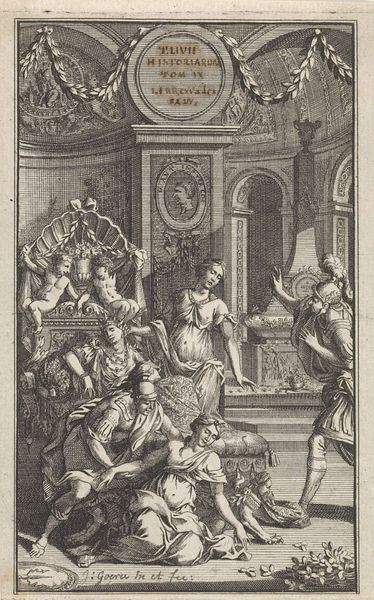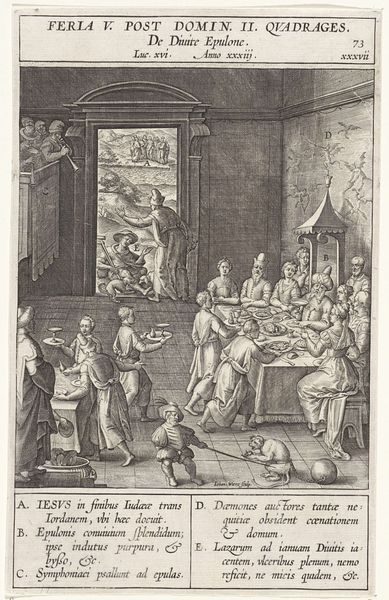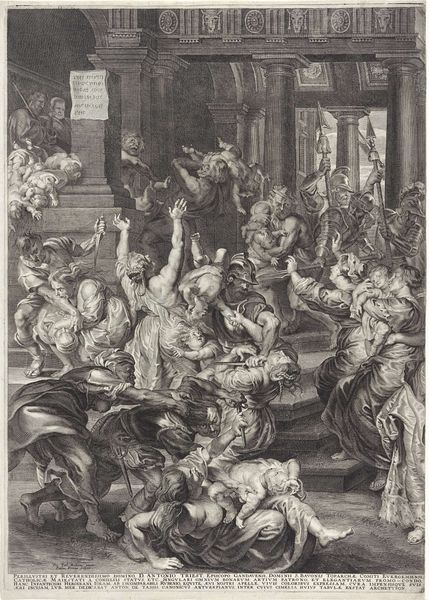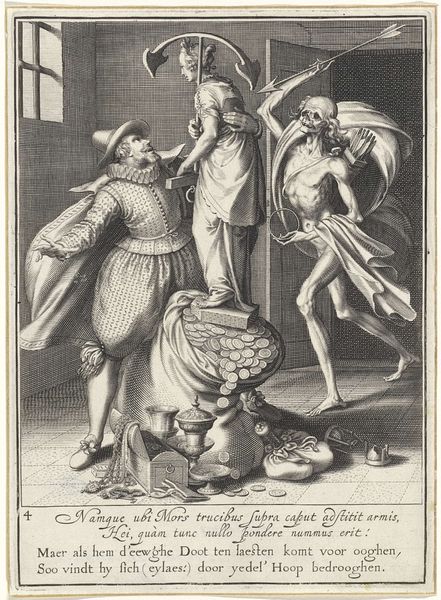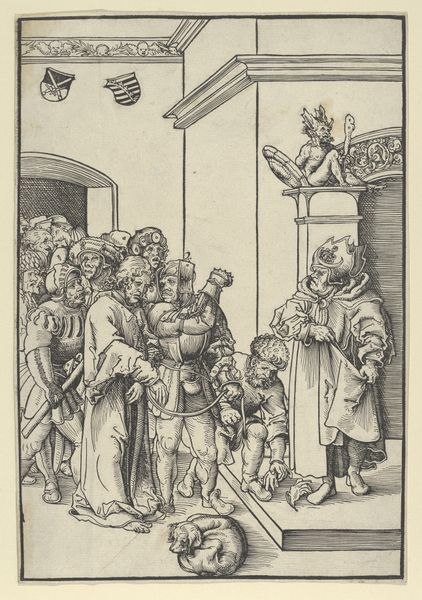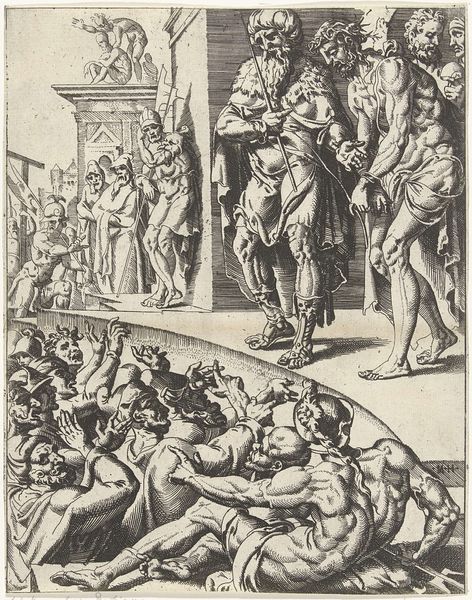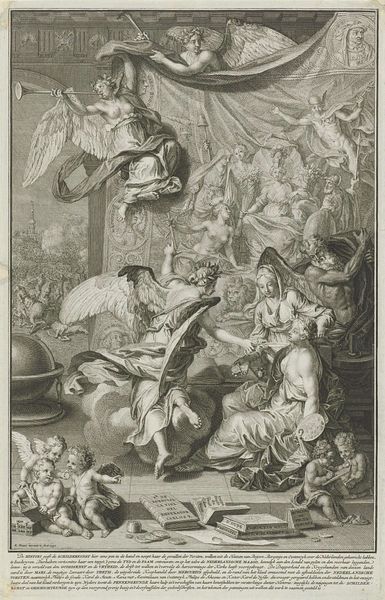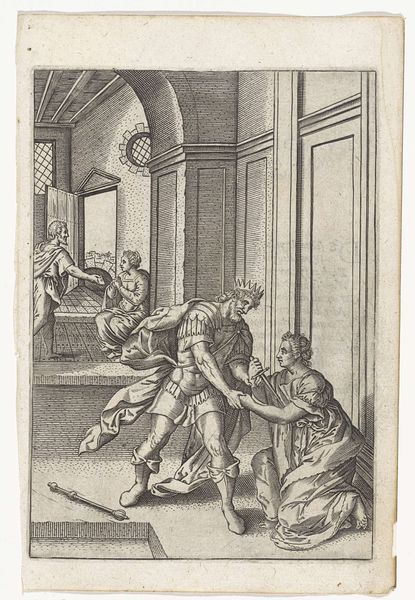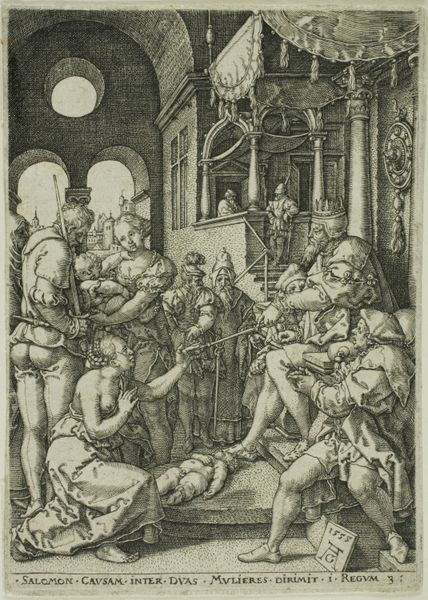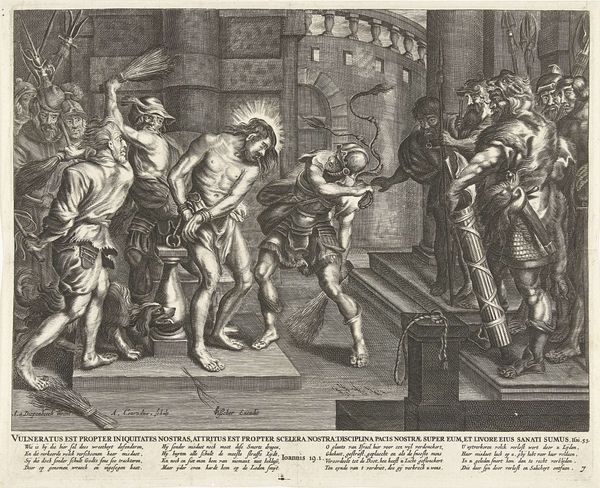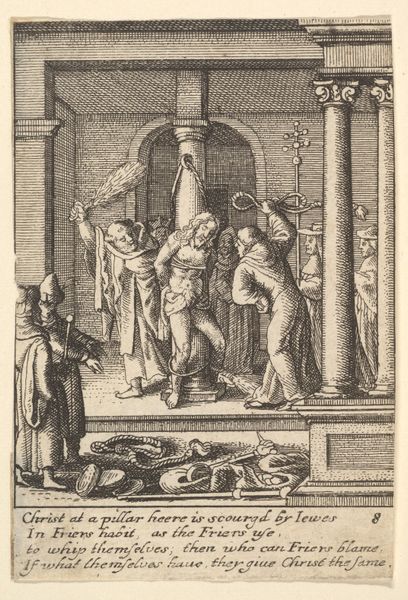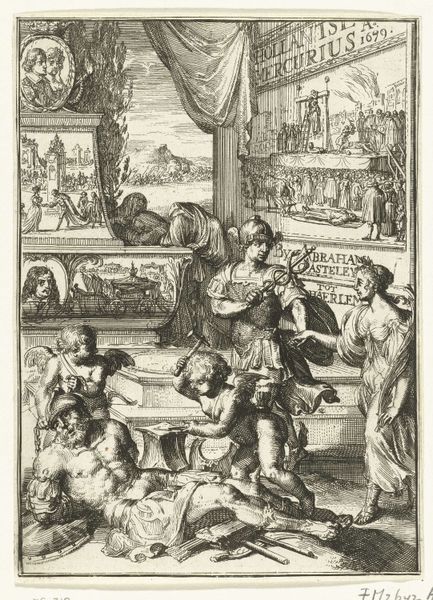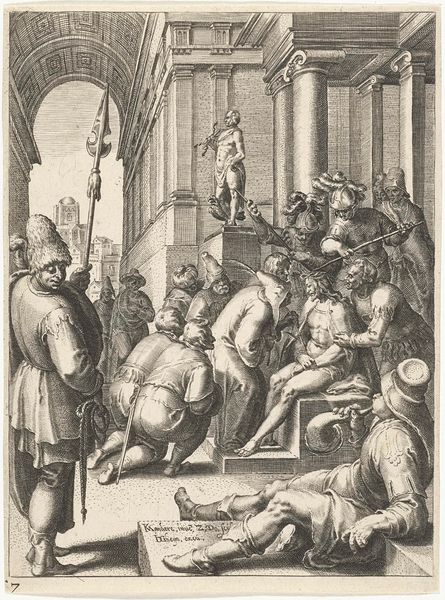
print, engraving
#
allegory
#
baroque
# print
#
pen illustration
#
old engraving style
#
figuration
#
11_renaissance
#
pen-ink sketch
#
pen work
#
history-painting
#
northern-renaissance
#
engraving
Dimensions: height 270 mm, width 195 mm
Copyright: Rijks Museum: Open Domain
Curator: Oh, this print is arresting. Its energy vibrates right off the paper! It's a whirlwind of emotion, don't you think? Editor: It does have quite a charge. What we are looking at here is an engraving titled "Goede en verkeerde hartstochten," or "Good and Bad Passions," dating back to the period between 1590 and 1632. The Rijksmuseum is its current home. Curator: Passions definitely seems like the right word for it! It's so dense. Are those...cupids wreaking havoc? I almost feel like I've stumbled into someone's subconscious. Editor: In a sense, that's what allegory is all about—externalizing internal conflict. Hercules, holding his lion skin, is seemingly trying to ward off these cupids who represent base desires. Curator: Hercules! Of course! I was so caught up in the fleshy chaos that I missed that. So it’s Hercules struggling to keep his appetites at bay... I relate. Is that Athena’s shield in the back? What's her significance here? Editor: Indeed it is. It symbolizes wisdom and strategic defense. This piece visually encapsulates a societal concern prevalent then as now: The battle between reason and passion. This reflects Renaissance humanism grappling with classical virtues, but viewed through a contemporary lens, it is indicative of historical struggles concerning moral governance. Curator: Moral governance… that’s a very polite way of putting it! To me it suggests how we are eternally caught in the crosshairs between logic and letting loose; these contrary desires are like those maddeningly cute, pudgy cupids who, from this viewpoint, function as the harbingers of hedonism and chaos. Editor: I think the piece resonates because these themes remain pertinent. We still wrestle with these passions, even when socio-cultural context evolve. Curator: Agreed. Maybe that's the appeal, watching Hercules's herculean effort to fight what, ultimately, makes us human, these little demons within us. Editor: Indeed, whether looking through the lens of art history or modern theory, we must contend with Hercules as an attempt to both resist and negotiate with the landscape of our passions.
Comments
No comments
Be the first to comment and join the conversation on the ultimate creative platform.
